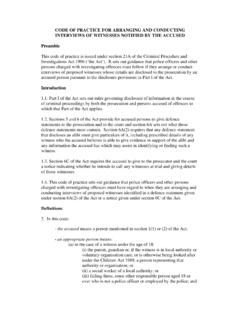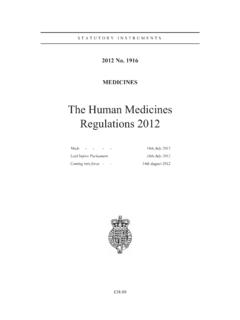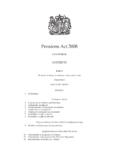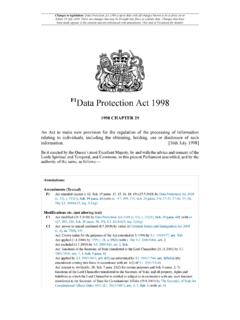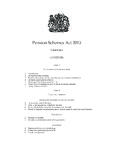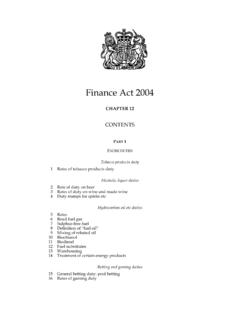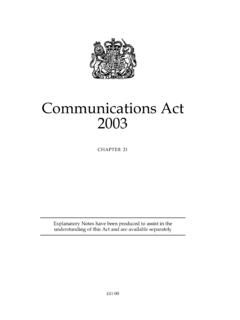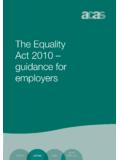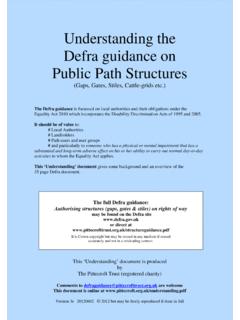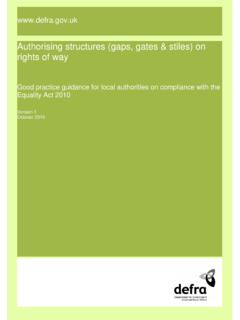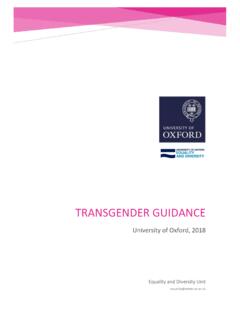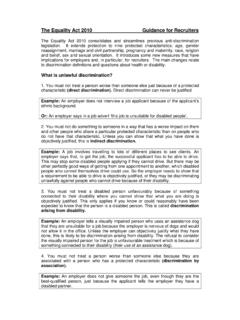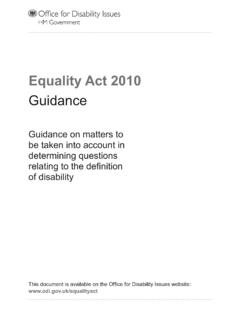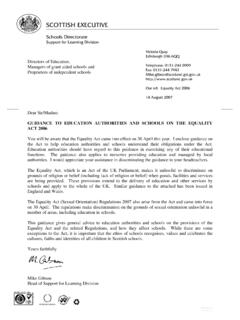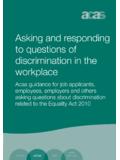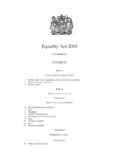Transcription of EQUALITY ACT 2010 - legislation.gov.uk
1 These notes refer to the EQUALITY Act 2010 (c15) which received Royal Assent on 8 April 2010 1 EQUALITY ACT 2010 EXPLANATORY NOTES Revised Edition August 2010 REVISION NOTES Page 175, paragraph 837 the examples have been revised to improve clarity. Formatting and typographical errors have been corrected throughout. These notes refer to the EQUALITY Act 2010 (c15) which received Royal Assent on 8 April 2010 2 EQUALITY ACT 2010 EXPLANATORY NOTES INTRODUCTION 1. These explanatory notes relate to the EQUALITY Act 2010 which received Royal Assent on 8 April 2010 . They have been prepared by the Government Equalities Office, the Department for Work and Pensions (in respect of provisions relating to disability and pensions), the Department for Children, Schools and Families and the Department for Business, Innovation and Skills (in respect of provisions relating to education), the Department for Transport (in respect of provisions relating to disability and transport)
2 And the Department for Business, Innovation and Skills (in respect of provisions relating to work exceptions). Their purpose is to assist the reader in understanding the Act. They do not form part of the Act and have not been endorsed by Parliament. 2. The notes need to be read in conjunction with the Act. They are not, and are not meant to be, a comprehensive description of the Act. So where a section or part of a section does not seem to require any explanation or comment, none is given. Background and summary Background 3. Domestic discrimination law has developed over more than 40 years since the first Race Relations Act in 1965.
3 Subsequently, other personal characteristics besides race have been protected from discrimination and similar conduct, sometimes as a result of domestic initiatives and sometimes through implementing European Directives. 4. The domestic law is now mainly contained in the following legislation (where applicable, as amended): x the Equal Pay Act 1970; x the Sex Discrimination Act 1975; x the Race Relations Act 1976; x the Disability Discrimination Act 1995; These notes refer to the EQUALITY Act 2010 (c15) which received Royal Assent on 8 April 2010 3 x the Employment EQUALITY (Religion or Belief) Regulations 2003; x the Employment EQUALITY (Sexual Orientation) Regulations 2003; x the Employment EQUALITY (Age) Regulations 2006; x the EQUALITY Act 2006, Part 2.
4 X the EQUALITY Act (Sexual Orientation) Regulations 2007. 5. The main European Directives affecting domestic discrimination legislation are: x Council Directive 2000/43/EC implementing the principle of equal treatment between persons irrespective of racial or ethnic origin; x Council Directive 2000/78/EC establishing a general framework for equal treatment in employment and occupation; x Council Directive 2004/113/EC implementing the principle of equal treatment between men and women in the access to and supply of goods and services; x European Parliament and Council Directive 2006/54/EC on the implementation of the principle of equal opportunities and equal treatment of men and women in matters of employment and occupation (recast).
5 Also relevant in this context is Article 157 of the Treaty on the Functioning of the European Union. 6. In addition, in July 2008 the European Commission published a new draft Directive which would prohibit discrimination because of disability, religion or belief, sexual orientation and age, in access to goods and services, housing, education, social protection, social security and social advantage. This Directive is under negotiation. 7. In February 2005, the Government set up the Discrimination Law Review to address long-term concerns about inconsistencies in the current discrimination law framework.
6 The Review was tasked with considering the fundamental principles of discrimination legislation and its underlying concepts, and the opportunities for creating a clearer and more streamlined framework of EQUALITY legislation which produces better outcomes for those who experience disadvantage. 8. In June 2007 the Department for Communities and Local Government published a consultation paper, A Framework for Fairness: Proposals for a Single EQUALITY Bill for Great Britain. This was followed in June and July 2008 by two Command Papers published by the Government Equalities Office: Framework for a Fairer Future the EQUALITY Bill (Cm 7431); and The EQUALITY Bill Government Response to the Consultation (Cm 7454).
7 In January 2009, the Government published These notes refer to the EQUALITY Act 2010 (c15) which received Royal Assent on 8 April 2010 4 the New Opportunities White Paper (Cm 7533) which, amongst other things, committed the Government to considering legislation to address disadvantage associated with socio-economic inequality. 9. The following further documents were published by the Government Equalities Office during the passage of the Bill that became the EQUALITY Act: in April 2009, EQUALITY Bill: Assessing the impact of a multiple discrimination provision (a summary of responses was published in October 2009); in June 2009, EQUALITY Bill: Making it work - Policy proposals for specific duties; and in January 2010 EQUALITY Bill: Making it work - Ending age discrimination in services and public functions.
8 Summary 10. The Act has two main purposes to harmonise discrimination law, and to strengthen the law to support progress on EQUALITY . 11. The Act brings together and re-states all the enactments listed in paragraph 4 above and a number of other related provisions. It will harmonise existing provisions to give a single approach where appropriate. Most of the existing legislation will be repealed. The EQUALITY Act 2006 will remain in force (as amended by the Act) so far as it relates to the constitution and operation of the EQUALITY and Human Rights Commission; as will the Disability Discrimination Act 1995, so far as it relates to Northern Ireland.
9 12. The Act also strengthens the law in a number of areas. It: x places a new duty on certain public bodies to consider socio-economic disadvantage when making strategic decisions about how to exercise their functions; x extends the circumstances in which a person is protected against discrimination, harassment or victimisation because of a protected characteristic; x extends the circumstances in which a person is protected against discrimination by allowing people to make a claim if they are directly discriminated against because of a combination of two relevant protected characteristics; x creates a duty on listed public bodies when carrying out their functions and on other persons when carrying out public functions to have due regard when carrying out their functions to: the need to eliminate conduct which the Act prohibits.
10 The need to advance EQUALITY of opportunity between persons who share a relevant protected characteristic and those who do not; and the need to foster good relations between people who share a relevant protected characteristic and people who do not. The practical effect is that listed public These notes refer to the EQUALITY Act 2010 (c15) which received Royal Assent on 8 April 2010 5 bodies will have to consider how their policies, programmes and service delivery will affect people with the protected characteristics; x allows an employer or service provider or other organisation to take positive action so as to enable existing or potential employees or customers to overcome or minimise a disadvantage arising from a protected characteristic.
